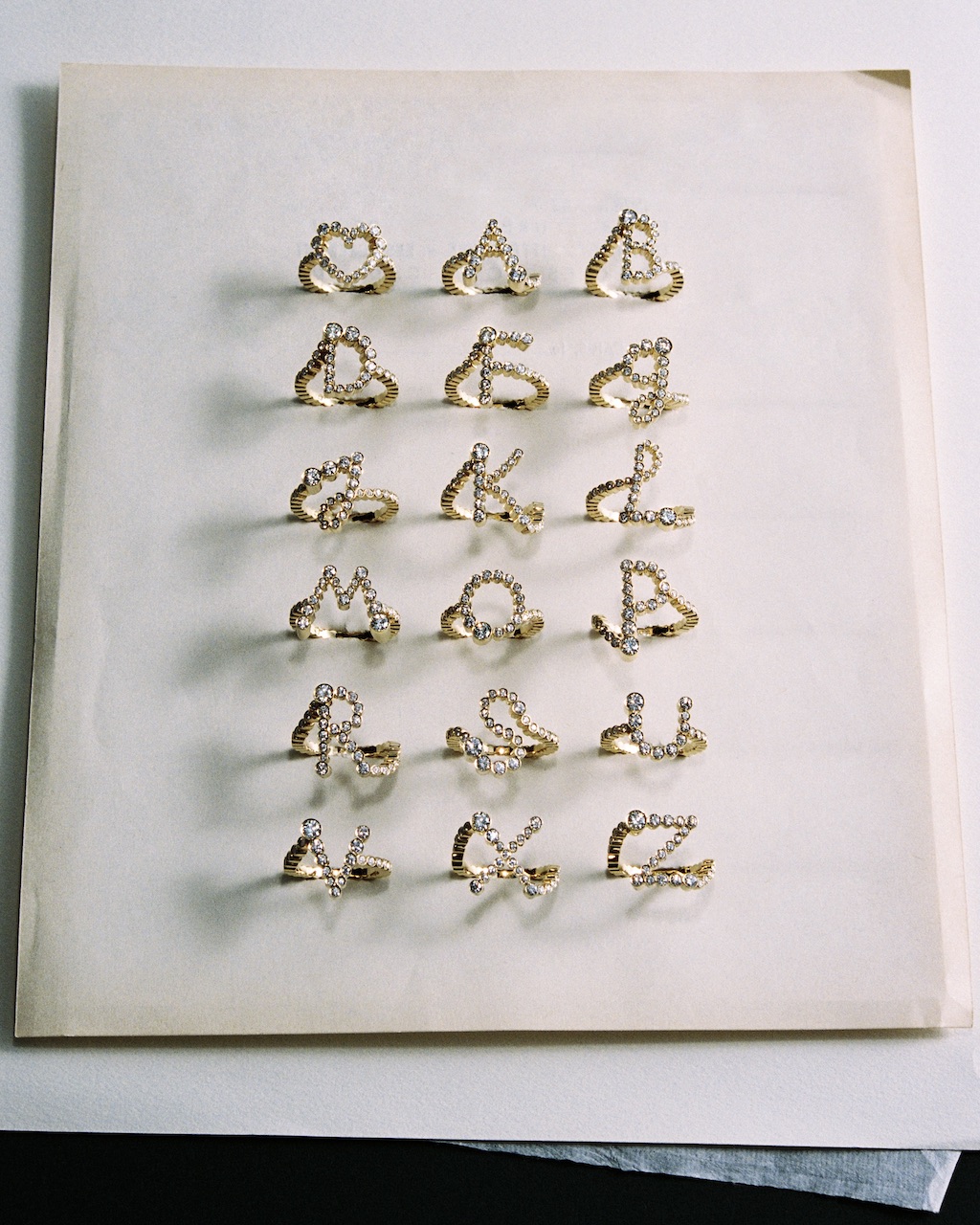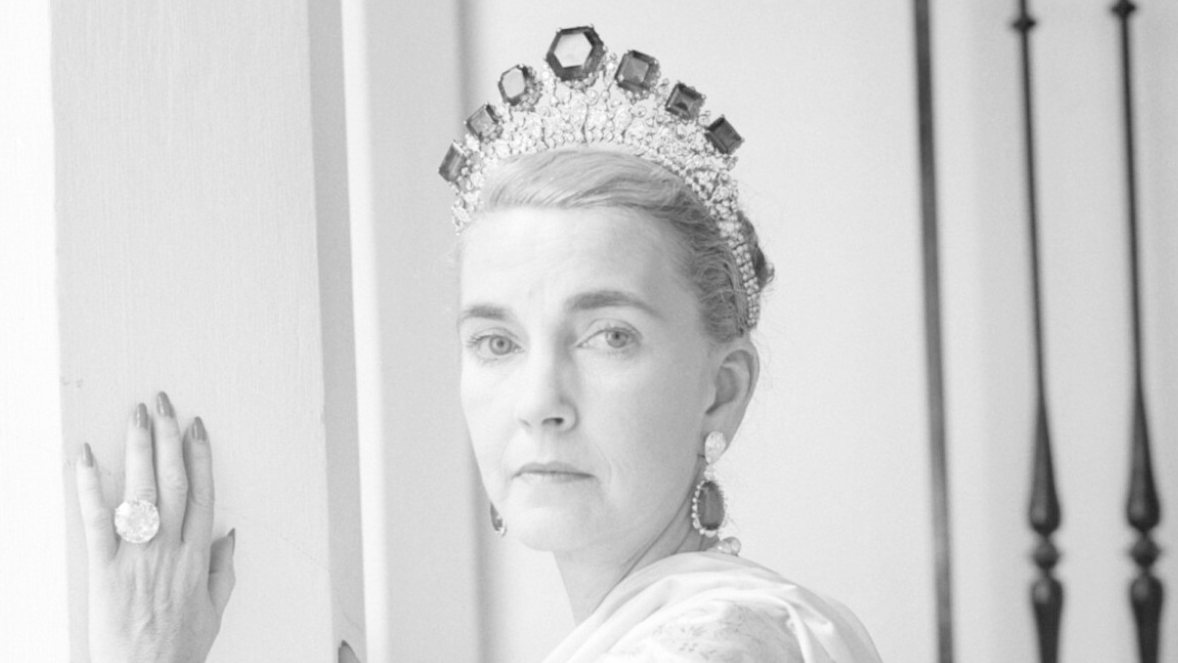Nature’s Toast to Color: All About the Champagne Diamond Ring
With hues that range from pale gold to deep cognac, the champagne diamond ring offers a warm, elegant alternative to colorless stones. Discover how these naturally tinted gems form and why champagne diamond rings are becoming the toast of modern jewelry.
Published: October 23, 2025
Written by: Grant Mobley

When you hear “champagne diamond,” you can easily imagine a sparkling gem that captures the effervescence of its namesake drink. And while that image isn’t far from the truth, it’s important to clarify one thing: “champagne” isn’t a formal diamond grade. It’s a color description, or a poetic way to express the warm, golden-brown hues of a natural diamond, evoking the same sophistication and celebration as a glass of bubbly.
Meet the Expert

- Grant Mobley is the Jewelry & Watch Editor of Only Natural Diamonds
- He is a GIA Graduate Diamonds Graduate
- He has over 17 years of jewelry industry experience, starting with growing up in his family’s retail jewelry stores
What Exactly Is a Champagne Diamond?
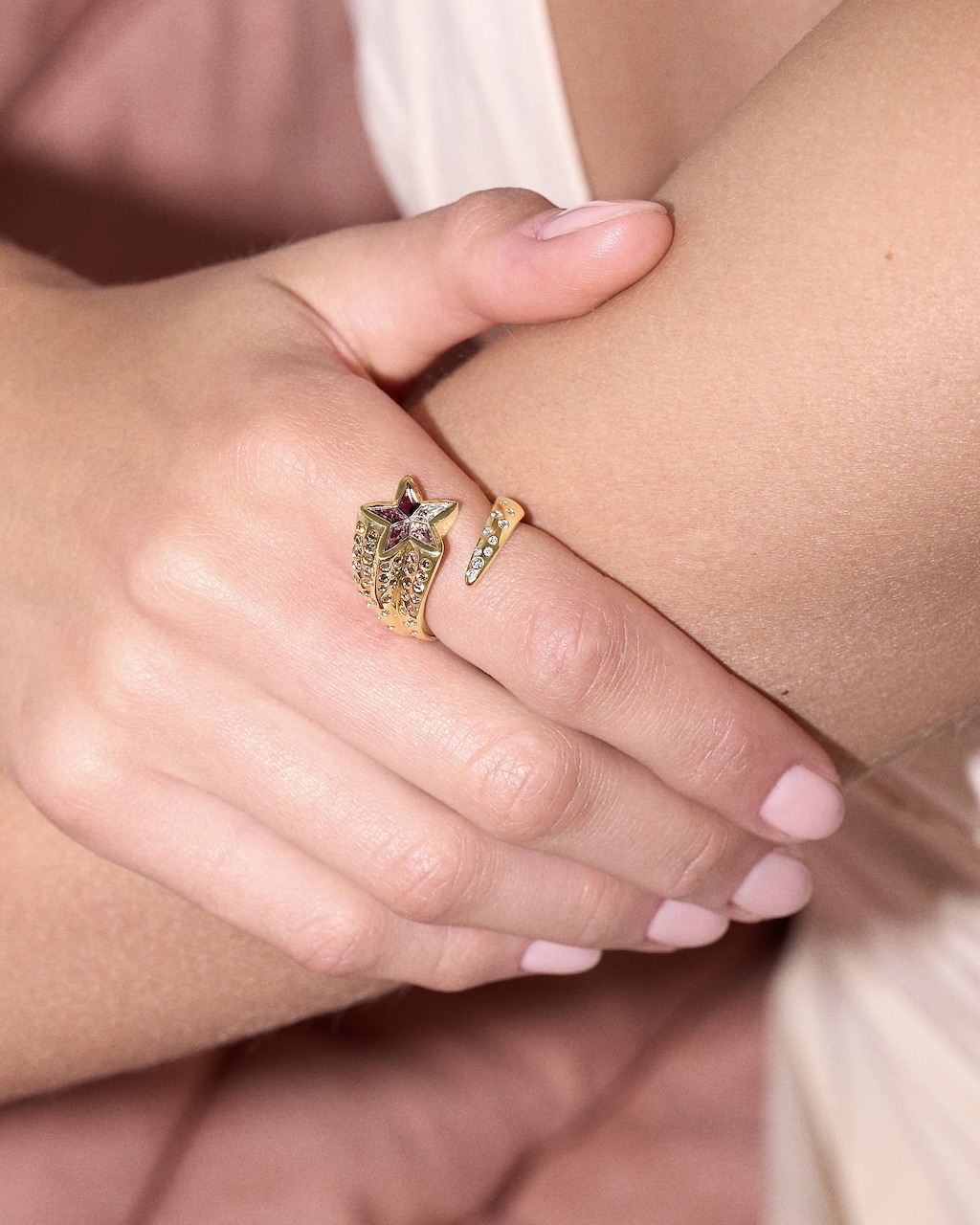
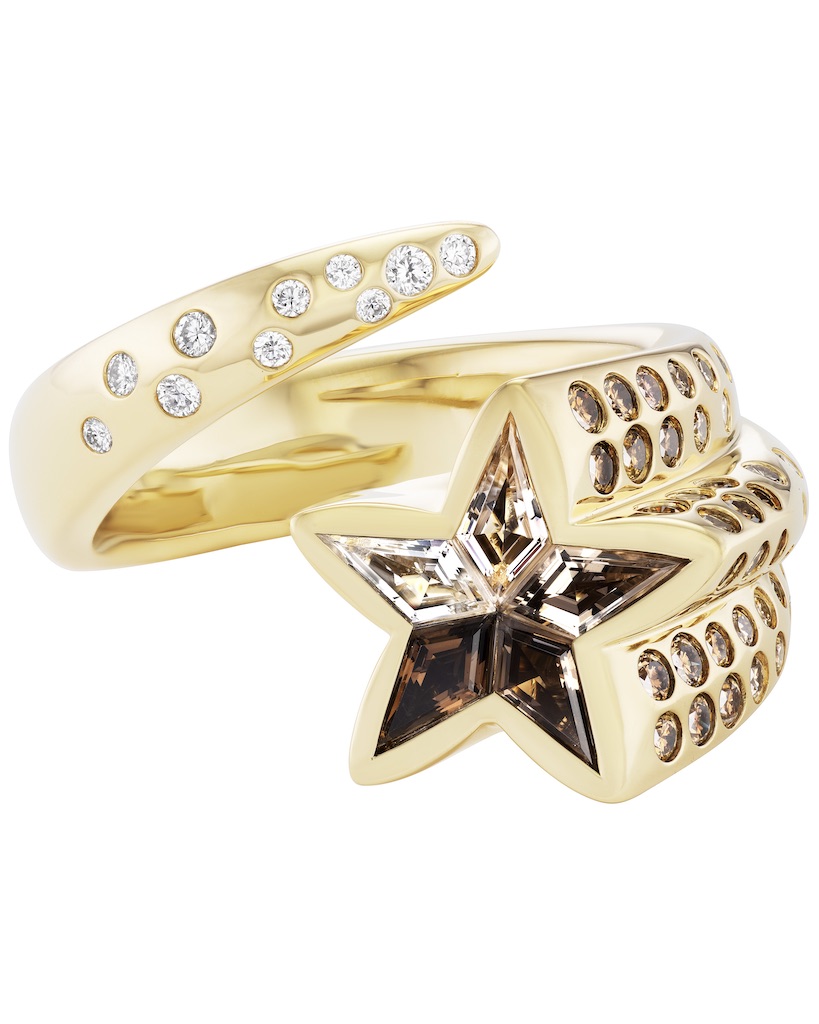
Champagne diamonds are natural brown to brown-yellow diamonds, whose hues range from the palest golden tint to deep, rich cognac tones. The term “champagne” describes stones in the lighter-to-medium range of this color family that resemble the sparkling tones of the drink. When the color deepens and takes on more saturated brown hues, I personally prefer terms like “cognac” or “chocolate” to describe them more accurately.
These descriptive names don’t come from gemological laboratories; they come from jewelers and consumers, who for decades have used them to make the natural beauty of colored diamonds easier to verbalize. In reality, gemologists evaluate a diamond’s color scientifically, not romantically, yet the term “champagne” perfectly captures the warmth and golden-brown glow of these gems.
How Champagne Diamonds Form
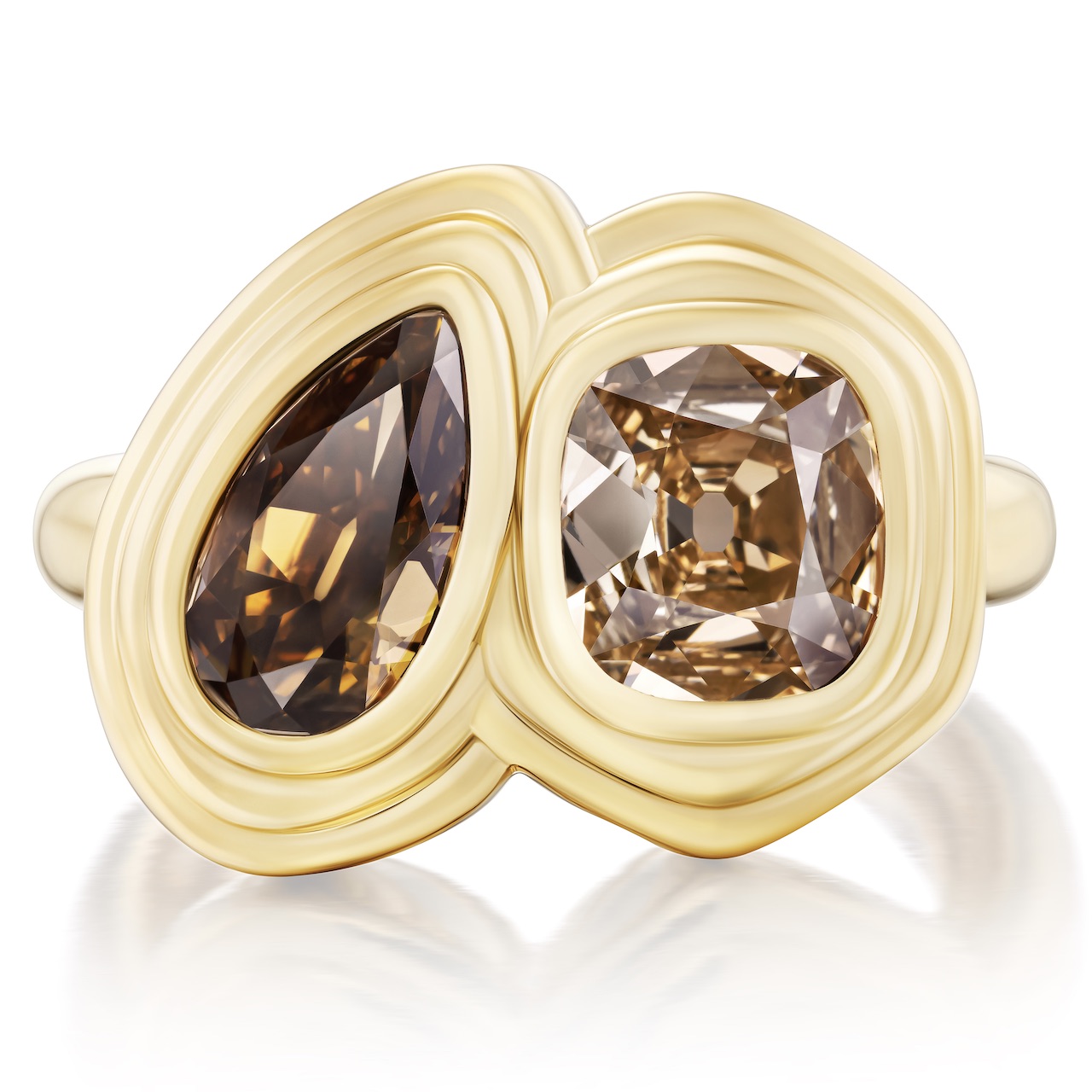
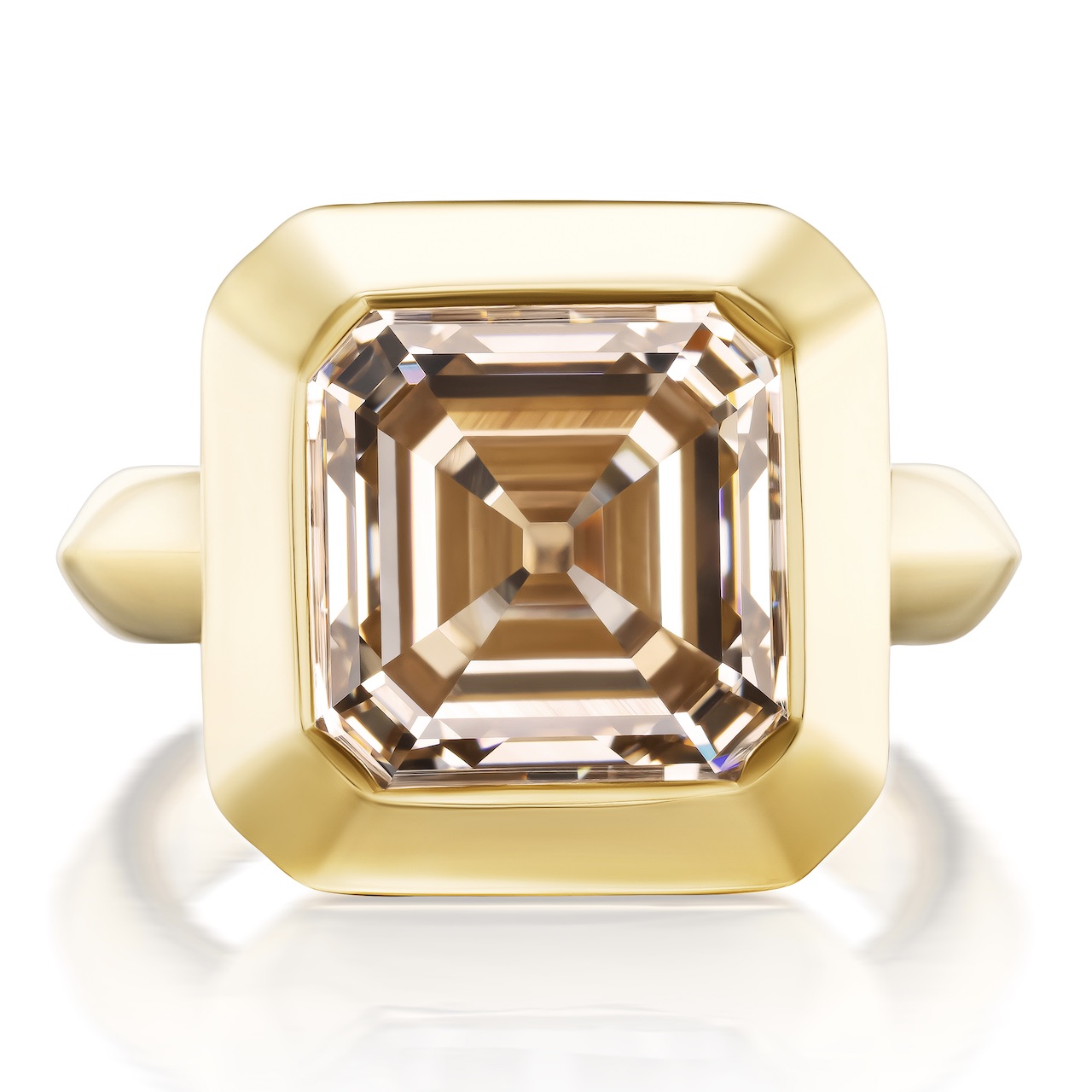
Every natural diamond forms under incredible heat and pressure deep within the Earth over billions of years, but what gives some diamonds their champagne hue is nitrogen and a distortion of the crystal structure. When nitrogen atoms enter a diamond’s crystal lattice during its formation, they absorb blue light, allowing yellow, brown, and gold tones to appear.
The exact shade depends on how these nitrogen atoms arrange themselves, in what quantities, and sometimes, on structural distortions within the crystal. This interplay of chemistry and geology is what gives champagne diamonds their warm, sunlit glow, and no two are ever exactly alike.
The Spectrum of Color and Value
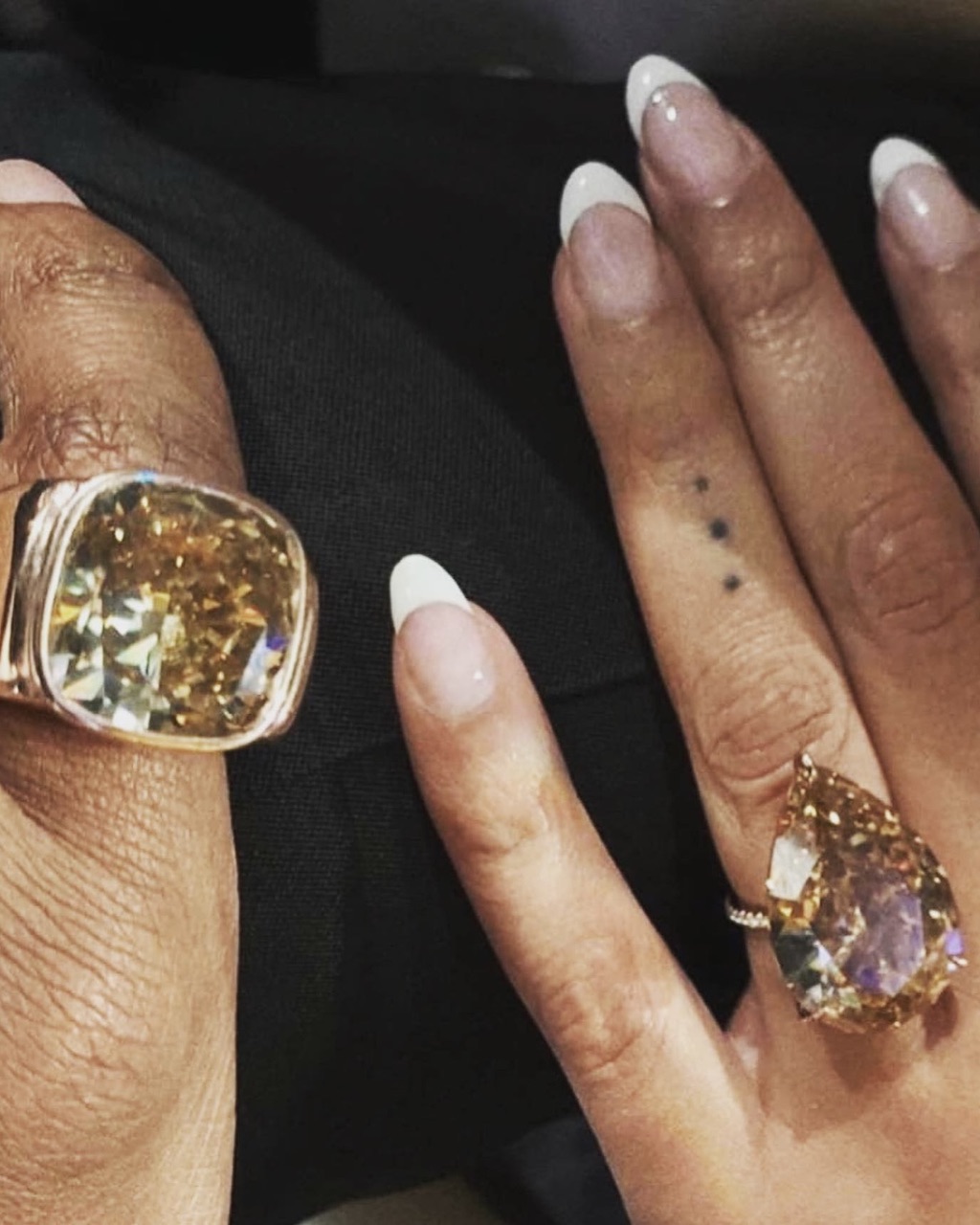
The Gemological Institute of America (GIA) grades diamonds on a color scale that runs from D (colorless) to Z (noticeably tinted yellow or brown). Champagne-colored stones usually fall near the lower end of this range, often between K and Z, depending on the depth of color. Once a diamond’s color becomes too rich for the standard D–Z scale, it enters the “fancy color” category, with descriptors such as Fancy Light Brown, Fancy Brown-Yellow, or Fancy Dark Brown, among others.
This means that “champagne” can refer to a wide range of shades, from pale straw to rich brown. Because the terminology is unofficial and subjective, it’s always best to view the diamond in person to appreciate its true tone, brightness, and personality.
The Rise of Champagne Diamonds in Jewelry
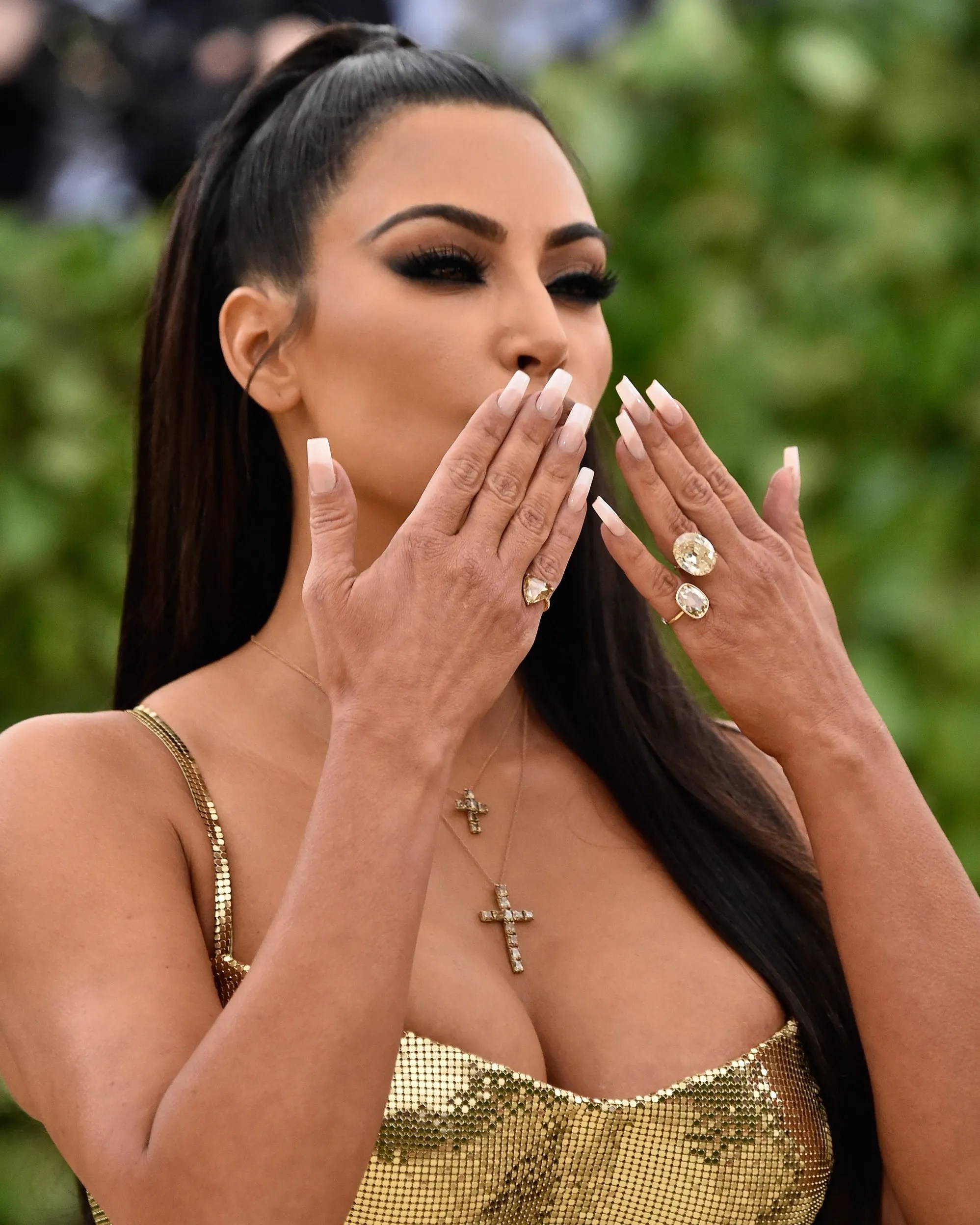
Although brownish diamonds have appeared throughout history, jewelers rarely celebrated them. Before the 1980s, most brown diamonds contained heavy inclusions and seldom found their way into fine jewelry. That changed dramatically with the discovery of the Argyle Diamond Mine in Western Australia in 1983. Argyle not only became the world’s leading source of pink diamonds but also produced an abundance of beautiful champagne-hued gems.
The Argyle discovery shifted the perception of these diamonds from “commercial-grade” to coveted natural color. By the late 20th century, champagne diamonds had earned their place in luxury jewelry showcases worldwide. Their warmth and versatility resonated with designers seeking an alternative to colorless diamonds, and today, these diamonds are more popular than ever, particularly in champagne diamond rings.
Why Champagne Diamond Rings Are So Popular
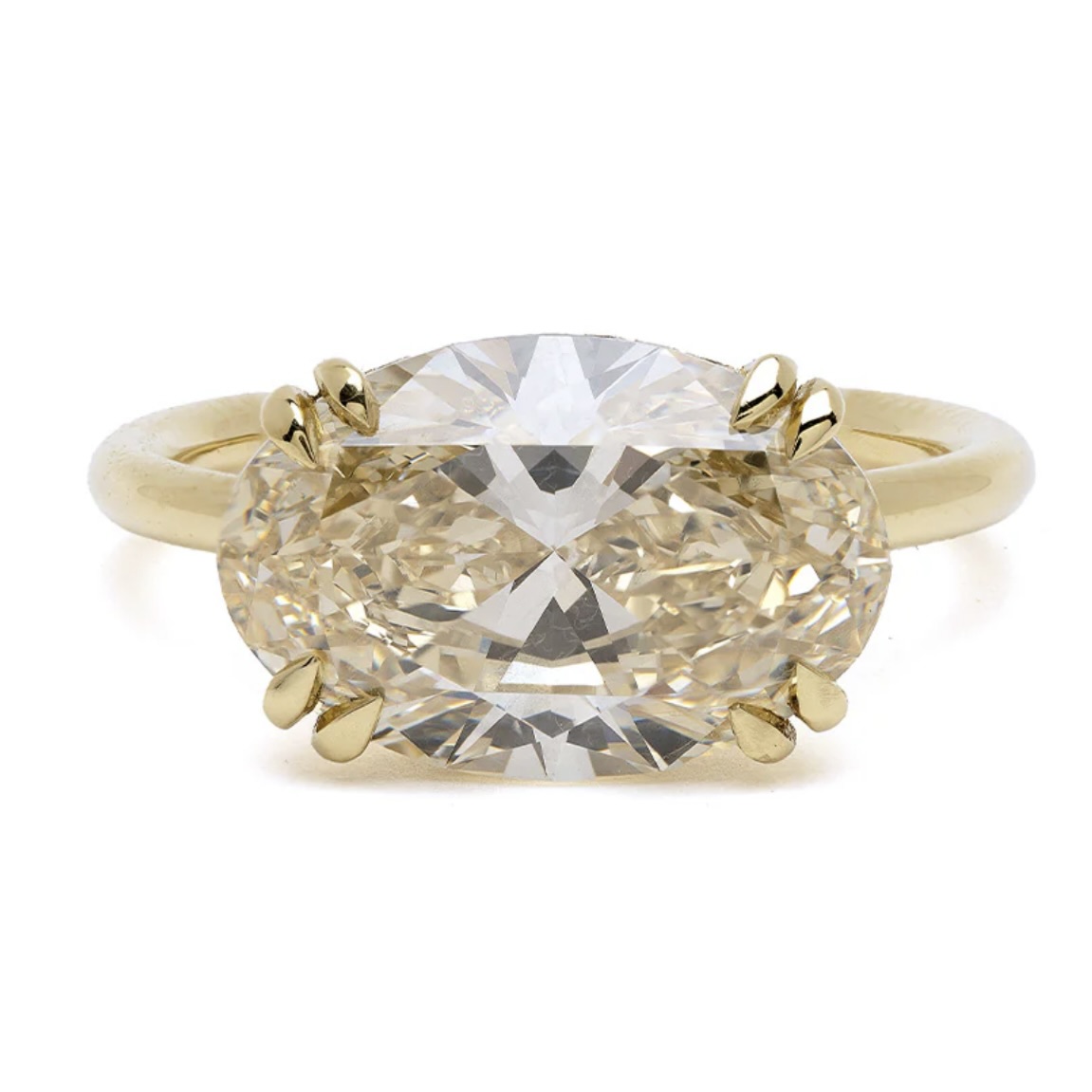
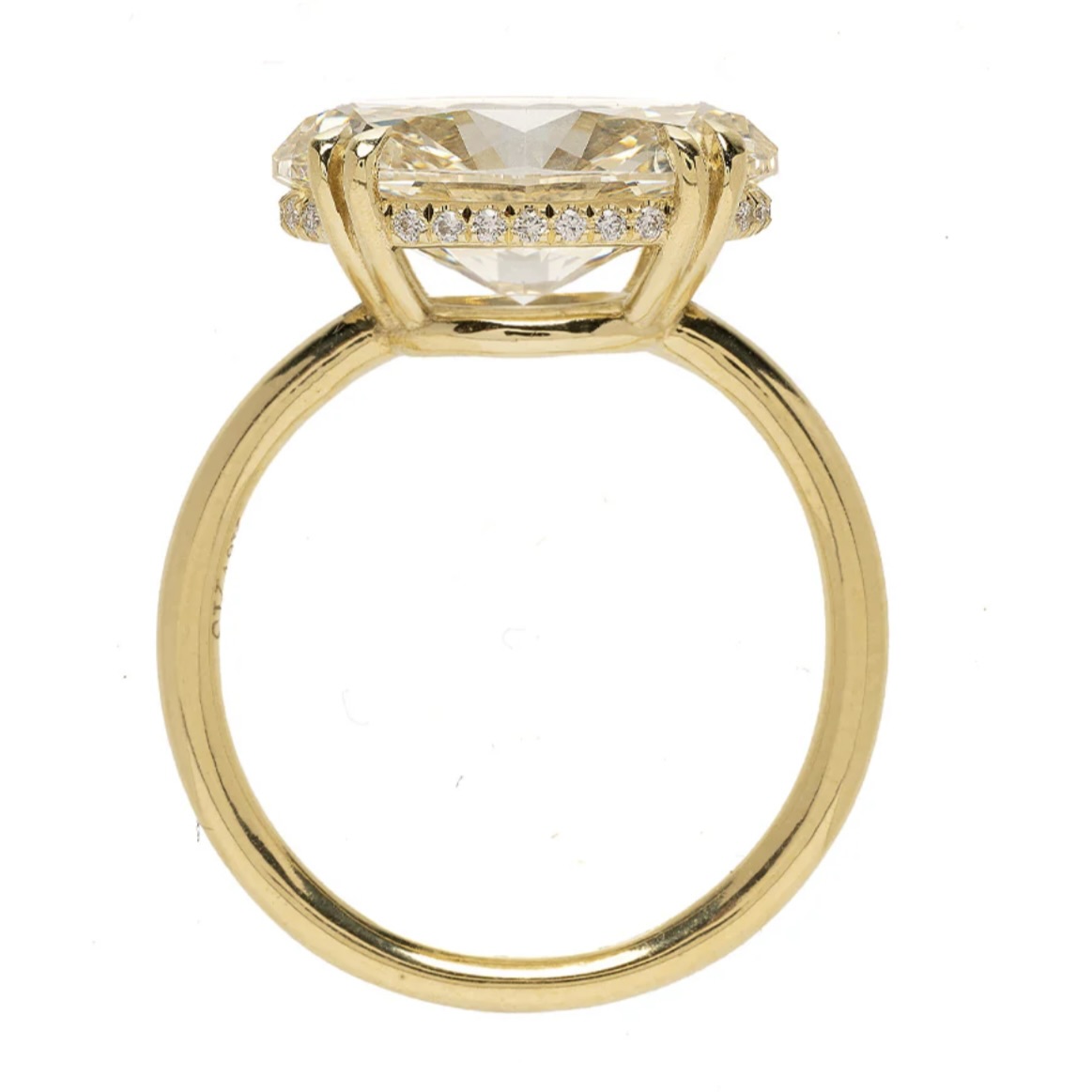
Champagne diamond rings blend sophistication with subtle individuality. Their neutral tones flatter every skin tone and pair beautifully with white, yellow, or rose gold. The color feels both earthy and luxurious, offering a natural warmth that makes a diamond ring feel personal and lived-in. They are less about perfection and more about character.
Unlike traditional colorless diamonds, champagne diamonds can hide inclusions more easily, meaning you don’t always need to aim for the highest clarity grades to find a stone that looks exceptional. This makes them an ideal option for engagement rings or everyday fine jewelry pieces that celebrate individuality while retaining timeless elegance.
The Geological and Historical Significance of Champagne Diamond Rings
Most of the world’s champagne diamonds originated from the Argyle Mine, which closed in 2020 after nearly four decades of operation. Its closure marked the end of an era in champagne diamond production, making these gems increasingly scarce and collectible.
Beyond Argyle, champagne diamonds appear in smaller quantities elsewhere, but Argyle stones remain particularly prized for their distinctive tone, clarity, and provenance. However, one of the most famous champagne diamonds of all time, the Golden Jubilee Diamond —a 545.67-carat cushion-cut stone—was discovered in South Africa in 1985 and remains the largest faceted diamond in the world.
Choosing a Champagne Diamond Ring
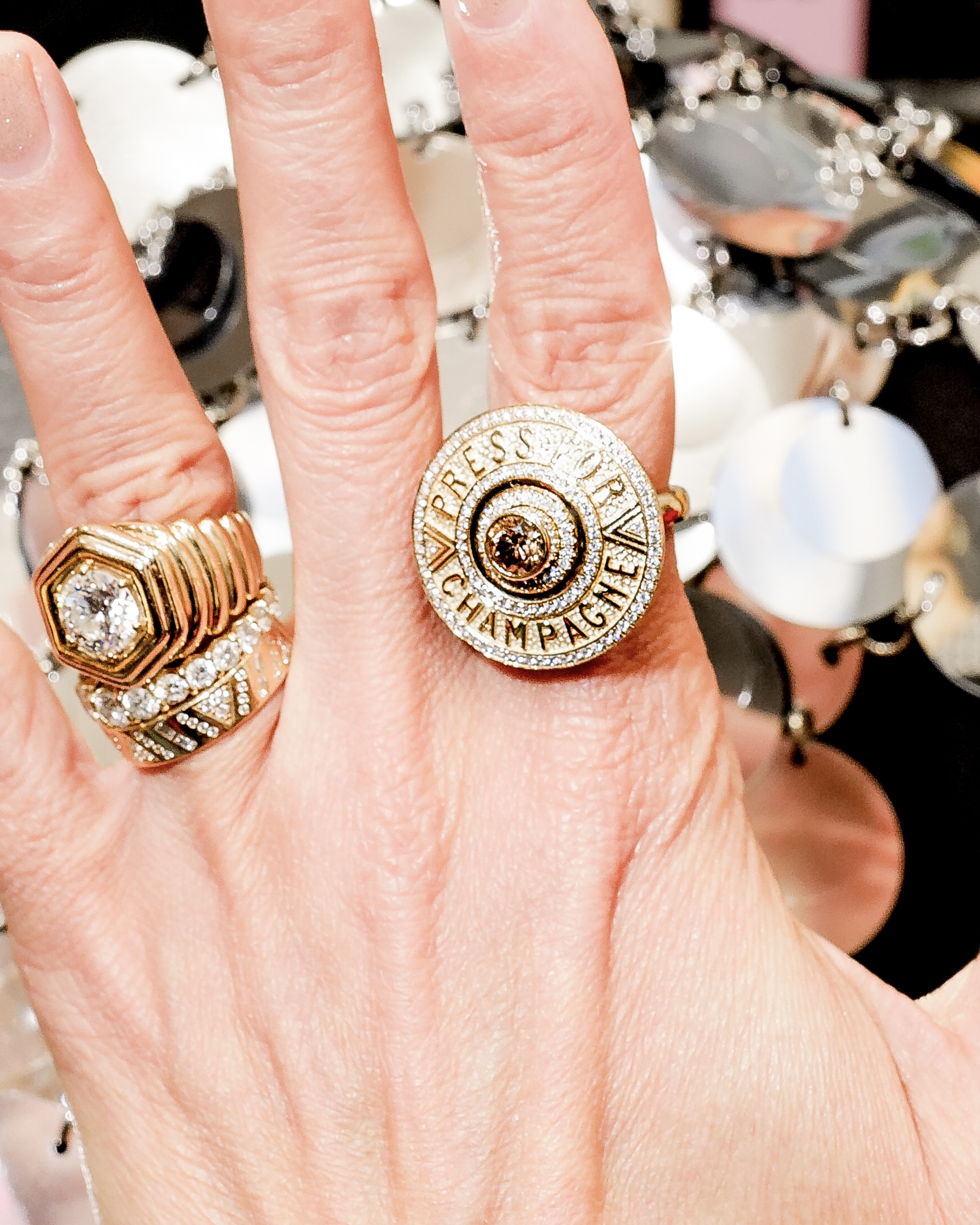
When selecting a champagne diamond ring, color preference should guide your decision. Lighter tones offer a subtle, vintage-inspired glow, while deeper hues create a bold, dramatic look. Champagne diamonds also look striking when surrounded by colorless diamonds or set against contrasting metals like yellow or rose gold, which amplify their warmth.
As a bonus, champagne diamonds are generally more affordable than other colorless or fancy-colored diamonds, such as pinks, blues, or greens, allowing collectors and couples to own a one-of-a-kind colored diamond without the multimillion-dollar price tag.
Shop For the Perfect Champagne Diamond Ring
Get inspired by champagne diamond rings from some of our favorite designers.














